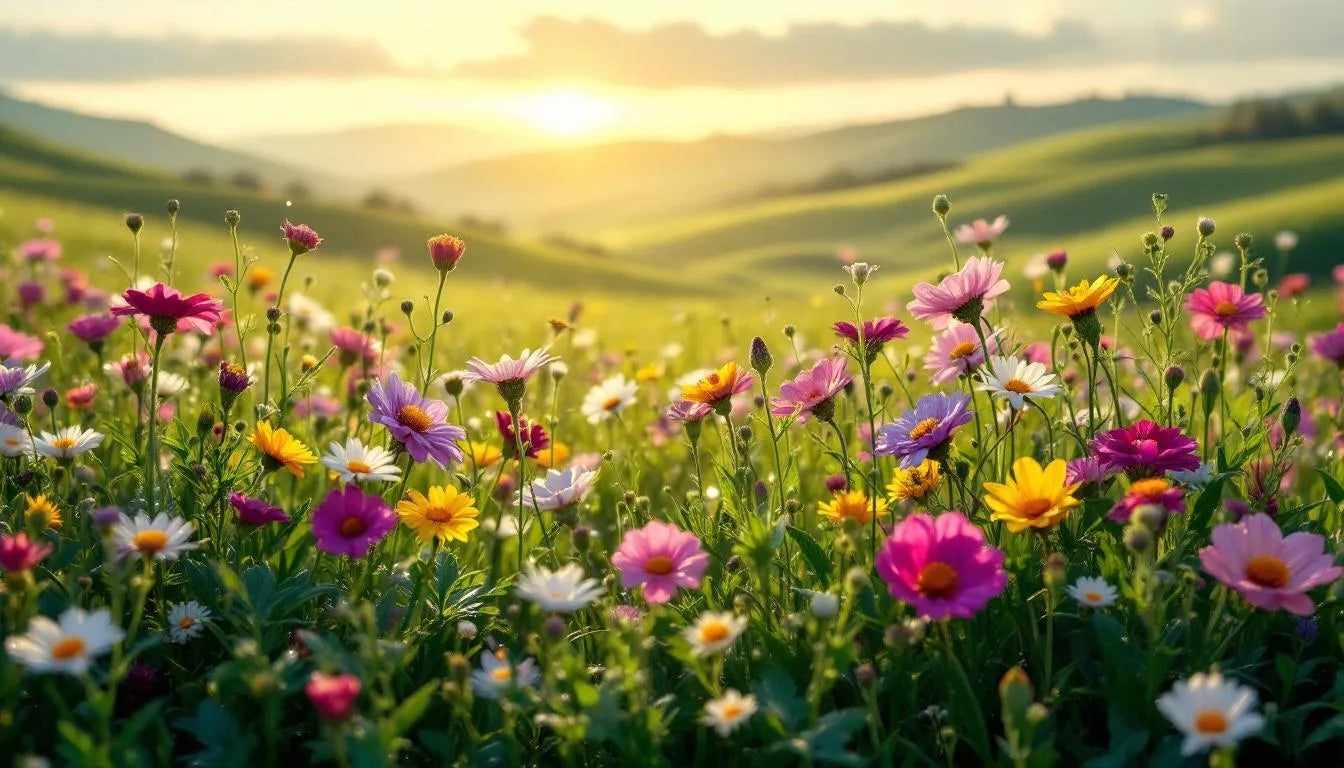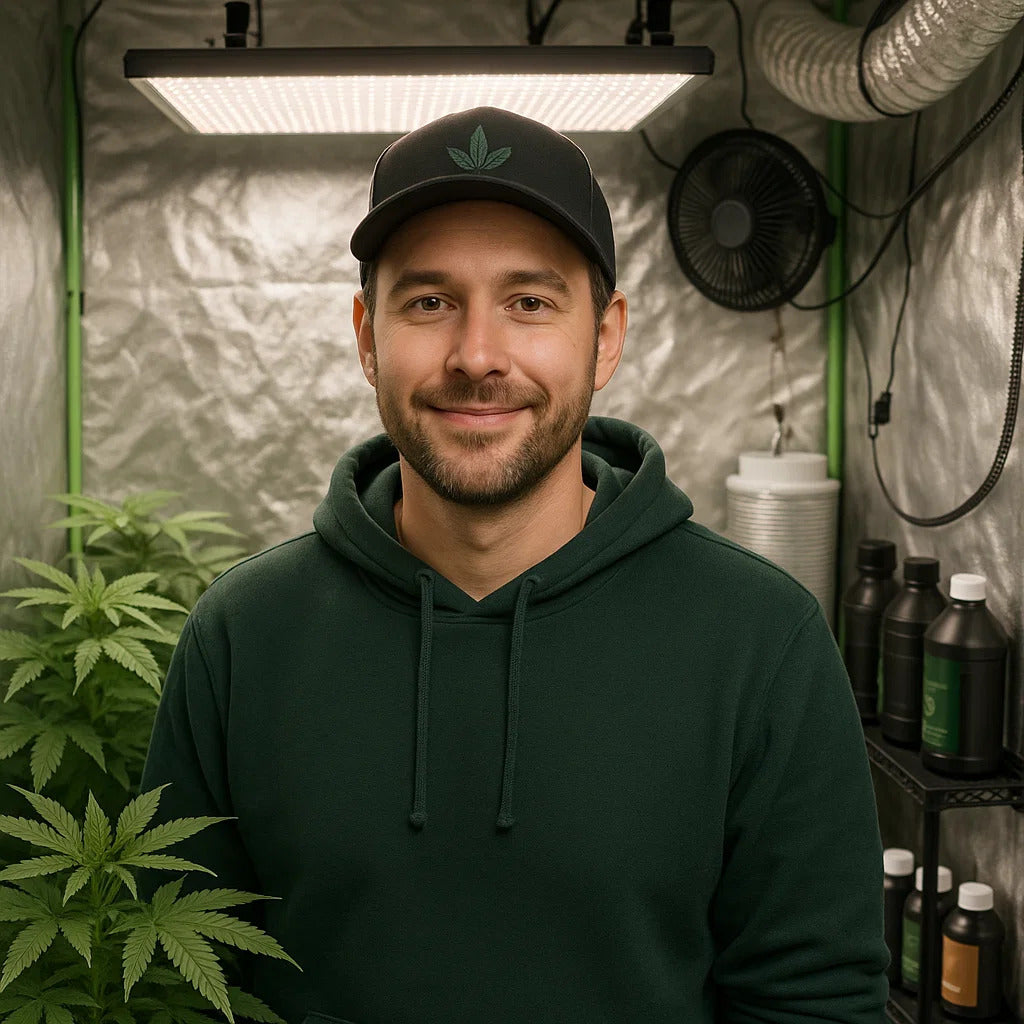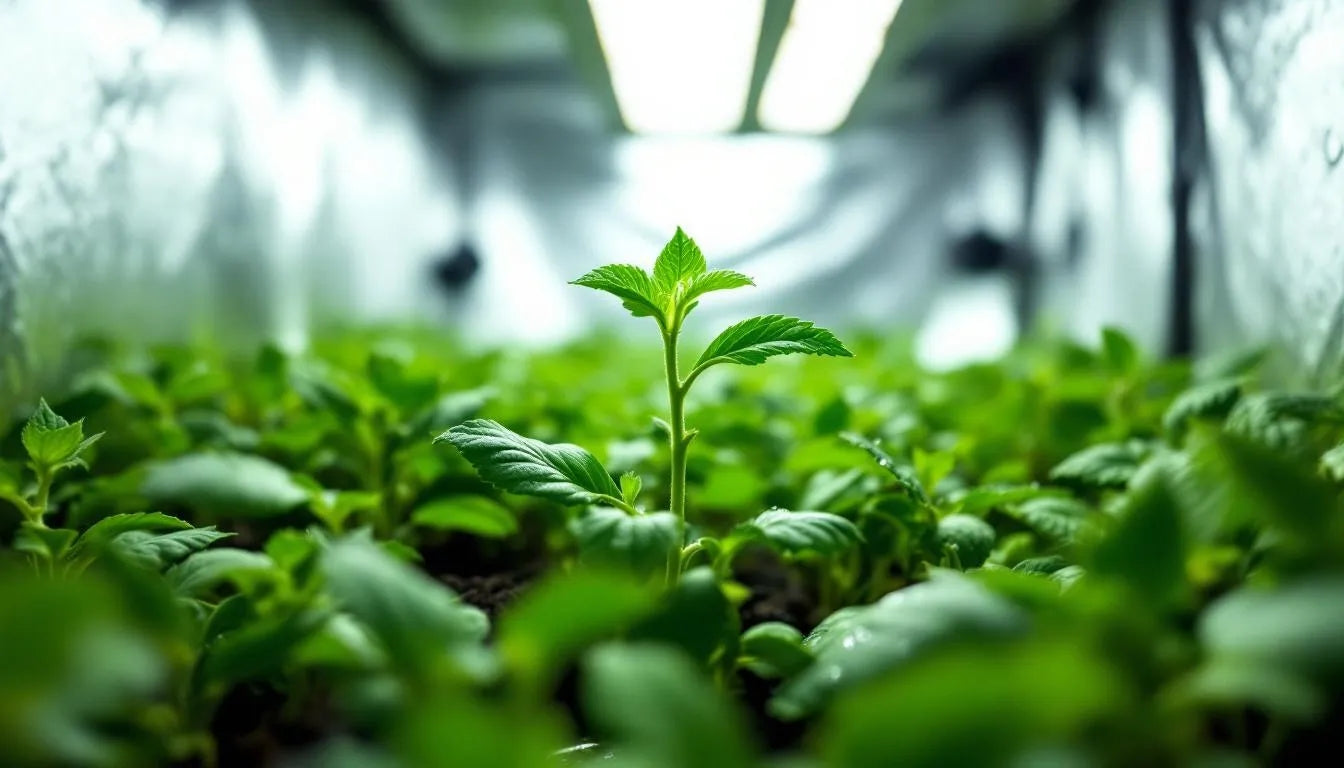
Where Does Wild Plant Grow? A Complete Guide to Plant in the Wild
Wild plants grow naturally across vast regions of the world, from the mountains of Central Asia to the abandoned farmlands of North America. Understanding where these plants grow wild provides fascinating insights into their natural habitat preferences and explains why controlled indoor growing environments can produce superior results compared to these feral populations.
Wild plants, often called "ditch weed" or feral varieties, represent the plant's ability to survive and spread without human cultivation. However, these wild varieties typically contain very low levels of active compounds and demonstrate why modern growers choose controlled environments for consistent, high-quality results.
This comprehensive guide explores the global distribution of wild plants, the environmental conditions that support their growth, and how this knowledge helps inform better cultivation practices for serious growers.

The Origins and Global Spread of Wild Plants
Central Asian Origins
These plants originated in the mountainous regions of Central Asia, particularly in areas that are now Kazakhstan, Kyrgyzstan, and western China. This region, known as the "Hindu Kush" corridor, remains home to some of the most genetically diverse wild plant populations on Earth.
Key Characteristics of Origin Regions:
- High altitude (3,000-10,000 feet)
- Continental climate with cold winters
- Well-draining, rocky soils
- Intense UV radiation at altitude
- Short growing seasons
These harsh conditions shaped the species into a hardy, adaptable plant capable of surviving in diverse environments worldwide.
How These Plants Spread Globally
The species spread from its Central Asian homeland through several mechanisms:
Human Migration: Ancient trade routes like the Silk Road carried seeds across continents Agricultural Expansion: Cultivation for fiber and food spread the plant to new regions Natural Dispersal: Birds and wind carried seeds to suitable habitats Industrial Use: 20th century cultivation introduced the plant to new climates
This global spread created distinct regional varieties adapted to local conditions, from the compact, cold-hardy plants of northern climates to the tall, tropical varieties of equatorial regions.
Major Wild Plant Regions Worldwide
North America: The Great Plains and Beyond
Primary Locations:
- Midwest United States: Nebraska, Kansas, Iowa, Missouri
- Canadian Prairies: Manitoba, Saskatchewan, Alberta
- Great Lakes Region: Minnesota, Wisconsin, Michigan
Wild plants in North America primarily descend from industrial crops cultivated during World War II. The "Hemp for Victory" campaign led to widespread cultivation, and feral populations established themselves after cultivation ceased.
Growing Conditions:
- Continental climate with cold winters
- Rich, deep soils (former agricultural land)
- Annual precipitation 20-40 inches
- Temperature range: -20°F to 100°F seasonally
Characteristics of North American Wild Plants:
- Low active compound content (typically under 0.3%)
- Tall, fibrous stalks
- Small, seedy buds
- High cold tolerance
- Self-seeding annual lifecycle
Europe: Eastern Plains and Mediterranean
Major Regions:
- Eastern Europe: Ukraine, Romania, Hungary
- Balkans: Serbia, Bulgaria, Albania
- Mediterranean: Parts of Italy, Greece, Turkey
European wild plants include both escaped crop varieties and naturalized populations that may have ancient origins.
Environmental Preferences:
- Temperate to Mediterranean climates
- Alkaline soils common in limestone regions
- Moderate to low annual rainfall
- Protection from harsh winter winds
Asia: From Siberia to the Himalayas
Significant Populations:
- Siberian Russia: Vast feral fields
- China: Western provinces, especially Xinjiang
- India/Pakistan: Kashmir region, Himachal Pradesh
- Nepal: High-altitude valleys
Asian wild plants show the greatest genetic diversity, including both fiber-type varieties and plants with higher active compound content.
Altitude Adaptations:
- High-altitude varieties: Compact, early flowering
- Valley populations: Taller, longer flowering periods
- Cold-adapted genetics: Improved freeze tolerance
Environmental Conditions Supporting Wild Plants
Climate Requirements
Wild plants thrive in specific climatic conditions that inform optimal growing strategies:
Temperature Preferences:
- Growing season: 60-85°F optimal range
- Winter survival: Can withstand temperatures to -20°F when dormant
- Heat tolerance: Survives up to 100°F with adequate moisture
Precipitation Patterns:
- Annual requirements: 15-40 inches
- Prefers spring/early summer moisture
- Tolerates drought once established
- Sensitive to prolonged flooding
Photoperiod Sensitivity:
- Most wild varieties are photoperiod-dependent
- Flowering triggered by shortening daylight
- Northern varieties flower earlier due to shorter seasons
Soil and Terrain Preferences
Soil Types:
- Well-draining soils: Prevents root rot and fungal issues
- pH range: 6.0-7.5 (slightly acidic to neutral)
- Nutrient levels: Tolerates poor soils but thrives in rich conditions
- Soil depth: Prefers deep soils for extensive root development
Terrain Characteristics:
- Slopes: Good drainage, UV exposure
- River valleys: Rich alluvial soils, moisture retention
- Disturbed ground: Roadsides, abandoned fields, clearings
- Edge habitats: Forest margins, field borders
This adaptability explains why indoor growing environments can optimize these natural preferences for superior results.
Differences Between Wild and Cultivated Plants
Active Compound Content
Wild Plants:
- Active compounds: Typically 0.1-3% (mostly under 1%)
- Secondary compounds: Variable, often 1-5%
- Other constituents: Generally low concentrations
- Inconsistent ratios between individual plants
Cultivated Plants:
- Primary compounds: Can exceed 25-30% in premium strains
- Compound ratios: Precisely bred for specific effects
- Full profiles: Optimized through selective breeding
- Consistent potency: Controlled genetics and environment
Plant Structure and Yield
Wild Varieties:
- Tall, sparse branching
- Small, loose buds
- High seed production
- Fibrous stalks
- Low overall yield of usable material
Indoor Cultivated:
- Compact, bushy growth from training
- Dense, resinous buds
- Seedless (sensimilla) production
- Optimized flower-to-leaf ratio
- High yields through environmental control
Quality and Consistency
Wild plants face challenges that controlled cultivation eliminates:
Environmental Stress: Weather extremes, drought, nutrient deficiencies Pest Pressure: No protection from insects, diseases, or mold Genetic Variation: Unpredictable traits from cross-pollination Harvest Timing: No control over optimal harvest windows
Modern grow tent setups eliminate these variables, producing consistent, high-quality results.
Legal and Ecological Considerations
Legal Status of Wild Plants
Important Legal Notes:
- Wild plant laws vary by jurisdiction
- Even low-potency feral varieties may be regulated
- Possession or cultivation laws apply regardless of origin
- Some regions actively eradicate wild populations
Research and Conservation:
- Wild varieties provide genetic diversity for breeding
- Some populations have unique adaptations
- Conservation efforts focus on preserving genetic resources
- Legal research permits required for scientific study
Ecological Impact
Positive Ecological Roles:
- Soil stabilization on disturbed ground
- Wildlife habitat and food source
- Pioneer species helping ecosystem recovery
- Carbon sequestration through rapid growth
Potential Concerns:
- Can become invasive in some ecosystems
- May hybridize with nearby cultivated plants
- Dense stands can exclude native plant species
- Difficult to control once established
Why Indoor Growing Surpasses Wild Plants
Environmental Control Advantages
Indoor cultivation eliminates the limitations that restrict wild plants:
Optimized Lighting: Full-spectrum LED systems provide ideal light intensity and spectrum throughout the growth cycle
Climate Control: Maintain perfect temperature and humidity levels for each growth stage
Nutrient Precision: Deliver exactly the right nutrients at the right time for maximum development
Pest Prevention: Controlled environments keep pests and diseases at bay
Genetic Optimization
Selective Breeding: Choose specific traits impossible in wild populations Stable Genetics: Consistent results from proven genetics Specialized Strains: Develop varieties for specific effects or growing conditions Preservation: Maintain valuable genetics without environmental pressures
Yield and Quality Maximization
Space Efficiency: Grow tent systems maximize production in minimal space Training Techniques: Optimize plant structure for maximum bud production Harvest Timing: Perfect timing for peak potency and quality Post-Harvest Control: Ideal drying and curing conditions
FAQ Section
Q: Is it legal to collect wild plants? A: Laws vary by location, but in most jurisdictions, collecting wild plants is illegal regardless of compound content. Even low-potency feral varieties are typically regulated. Always check local regulations before interacting with wild plants.
Q: Can wild plants have active effects? A: Most wild plants contain very low active compound levels (under 1%), making it unlikely to produce significant effects. Wild varieties typically have much higher secondary compound ratios and are primarily suitable for fiber rather than other use.
Q: Why are wild plants less potent than cultivated varieties? A: Wild plants haven't undergone selective breeding for high compound content. Environmental stresses, cross-pollination with low-potency plants, and survival-focused genetics all contribute to lower potency compared to carefully bred and controlled indoor varieties.
Q: Where are wild plants most commonly found in North America? A: The American Midwest, particularly Nebraska, Kansas, Iowa, and Missouri, has the largest wild plant populations. These areas had extensive cultivation during WWII, and feral populations established themselves afterward.
Q: How can wild plant genetics benefit modern cultivation? A: Wild varieties offer genetic diversity for breeding programs, including traits like cold tolerance, pest resistance, and unique compound profiles. However, these benefits are best realized through controlled breeding rather than direct cultivation of wild plants.
Featured Snippet Summary
Where do wild plants grow: Wild plants grow naturally across Central Asia (their origin), North American Great Plains, Eastern Europe, and mountainous regions of Asia. They thrive in temperate climates with well-draining soils and adapt to disturbed ground. Wild varieties typically contain low active compounds (under 1%) and produce fibrous, seedy plants unlike high-potency cultivated varieties.
Harness Nature's Lessons with Professional Indoor Growing
Understanding where plants grow wild reveals their remarkable adaptability and natural preferences. However, this knowledge also highlights why controlled indoor cultivation produces dramatically superior results compared to leaving plants to fend for themselves in nature.
Gorilla Grow Tents allow you to harness the best of both worlds: the plant's natural hardiness combined with optimized growing conditions impossible to achieve outdoors. With adjustable height systems, superior environmental control, and professional-grade construction, you can create the perfect conditions that wild plants can only dream of.
While wild plants struggle against environmental stresses, pests, and unpredictable conditions, your indoor grow setup eliminates these variables entirely. The result? Consistent, potent, high-quality yields that surpass anything found growing wild.
Don't settle for the limitations that restrict wild plants. Explore our complete growing systems and discover why thousands of growers choose controlled cultivation over leaving their success to chance.
Ready to optimize every aspect of your growing environment? Learn about maximizing yields in controlled spaces and environmental optimization techniques that wild plants could never access.

Lena Myles
I'm a mushroom enthusiast and home cook based in Oregon. I'm passionate about foraging and creating fungi-focused recipes, especially delicious, plant-based dishes using gourmet mushrooms like trumpet, shiitake, and oyster. When I’m not in the kitchen, you’ll usually find me wandering the woods in search of new wild flavors.

